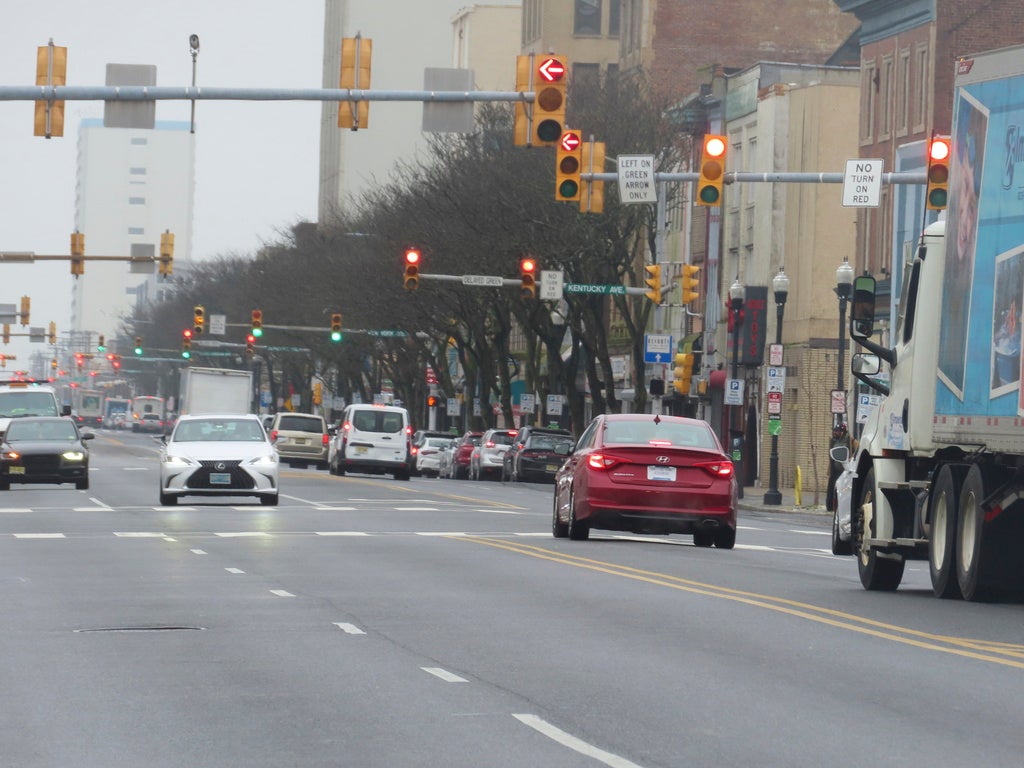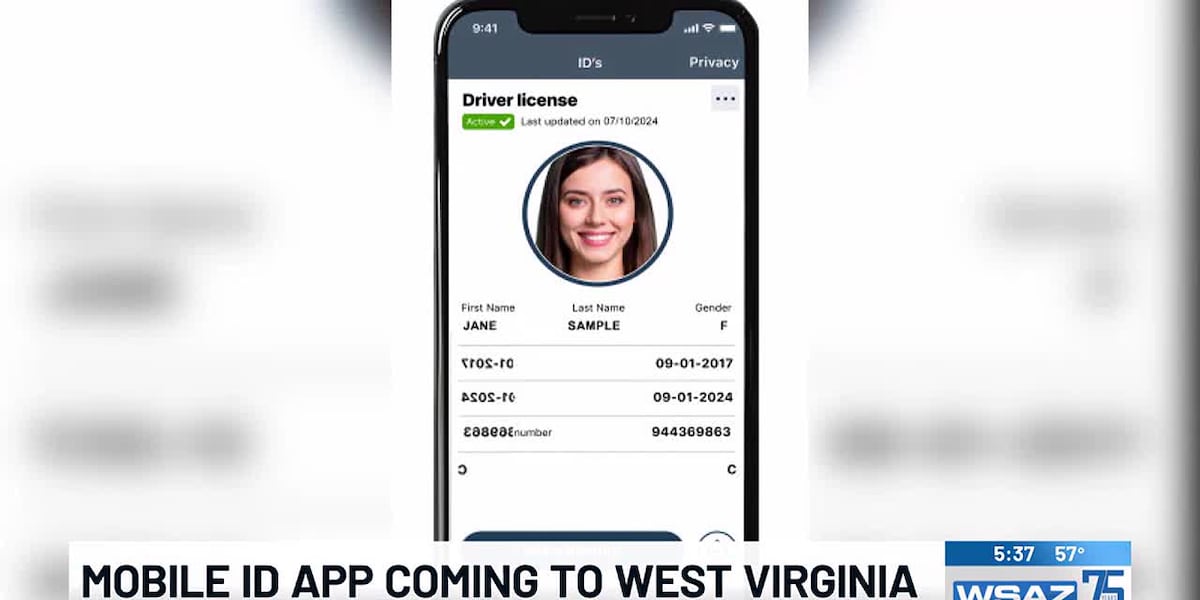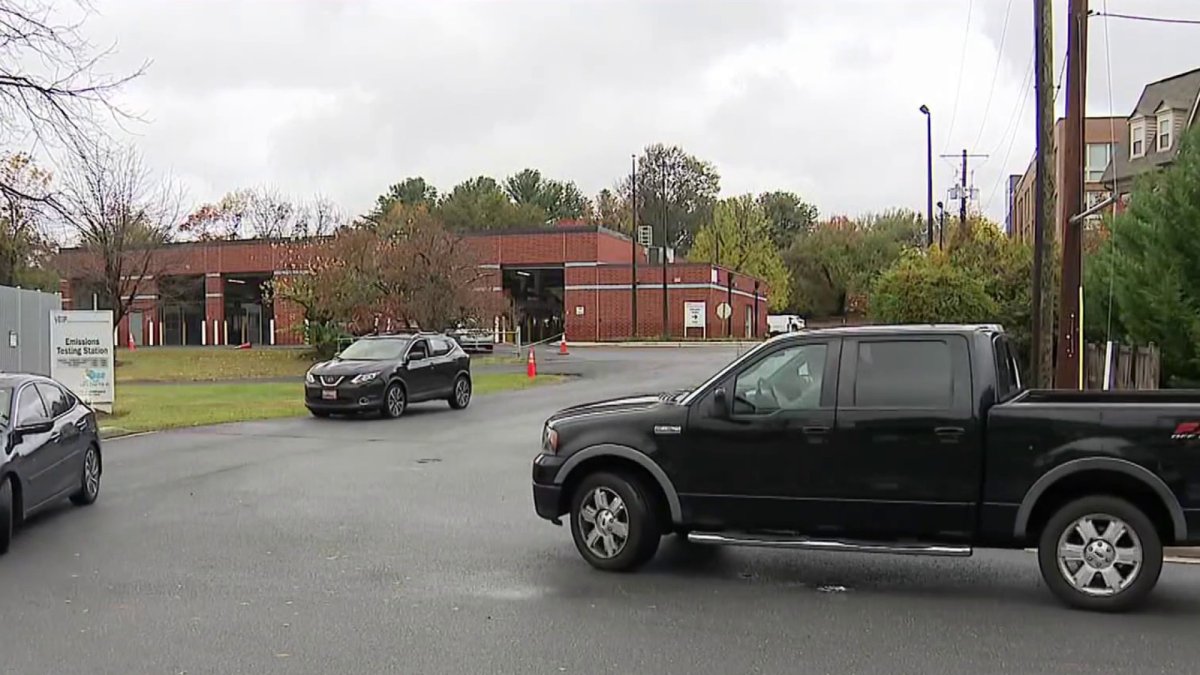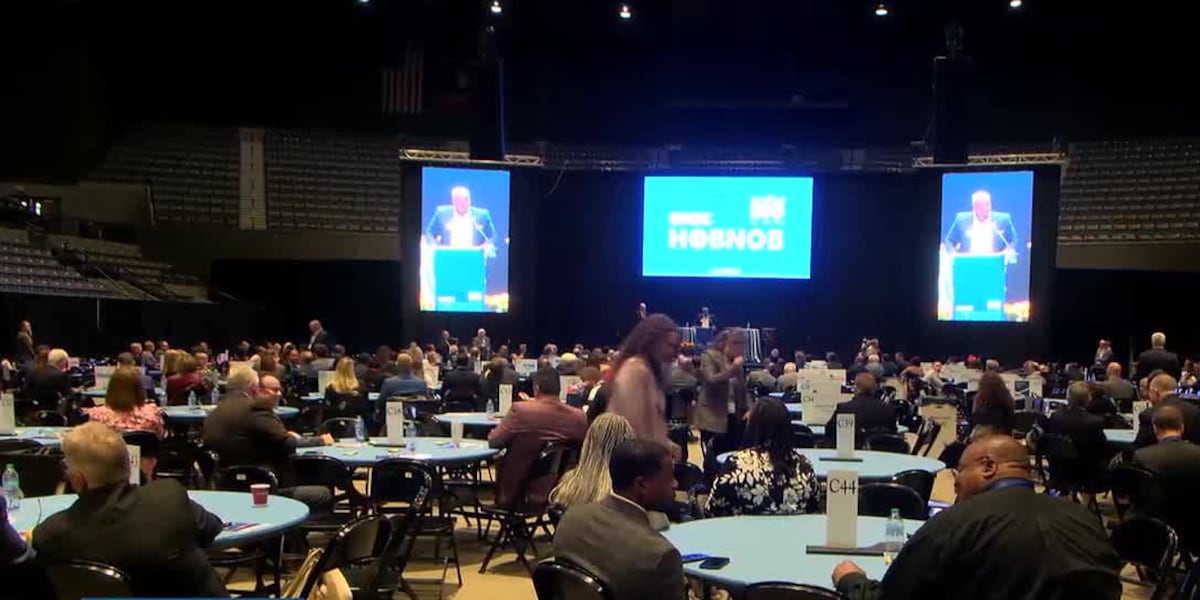New Jersey
N.J. now mandates new drivers get more practice: Here’s what parents must do

Getting the probationary license
Drivers have to complete 50 hours of supervised driving practice and pass the road test and must be at least 17 years old before they qualify for a probationary license.
“When you have that you can practice what we call unsupervised driving, you are allowed to drive no later than 11 p.m. at night and no earlier than 5 a.m.,” he said. “No distractions, meaning no cell phones, no hand-held devices.”
Drivers under the age of 21 with a probationary license must place a red decal on the upper left-hand corner of the vehicle’s license plate.
Parents, guardians or dependents are allowed as passengers. A dependent can be the driver’s child, not a brother or sister. Only one additional passenger is allowed in the vehicle unless accompanied by a parent or guardian.
Getting a regular license
The NJ MVC requires those with a probationary driver’s license to continue unsupervised driving for one year. After that period, it can be upgraded to a basic license online.
If a driver doesn’t upgrade within three and a half years of receiving the probationary license, they have to make an appointment at a Licensing Center to renew their probationary license.
Making the roads safer
Connolly said in a densely populated state like New Jersey, the new requirement makes sense.
“This law is underscoring the importance of practice, getting behind the wheel, putting the time in behind the wheel, for new and young drivers and teen drivers this is especially important,” he said. “We want them to get the experience of driving on New Jersey’s roads, in different contexts, in different environments, at night, during the day.”
Noble said it’s important to teach new drivers that their focus should solely be on the road. Drivers should not be talking, texting or fooling around when they’re behind the wheel, and parents need to practice what they preach.
“Over the past several years we’ve just seen an epidemic of unsafe behavior behind the wheel, so we need people to be engaged, especially when they’re teaching teens to drive,” she said.
Once the 50 hours of practice driving are completed, the parent, guardian or supervising driver must sign a form certifying the new driver has spent the required amount of practice time behind the wheel.
“We’ve heard numerous times over the years, ‘Oh I can’t drive with my kid, it makes me too nervous.’ Well, you need to get beyond the nervousness and actually teach them how to drive,” Noble said.
More information about getting a driver’s license is available at the New Jersey Motor Vehicle website.

New Jersey
Addressing NJ Food Bank luncheon, Feeding America CEO stresses the need as SNAP cuts loom

More than 350 people came together in Whippany, New Jersey, on Thursday for the annual Women Fighting Hunger Luncheon to benefit the Community FoodBank of New Jersey (CFBNJ).
New Jersey’s largest anti-hunger organization, CFBNJ services 15 counties in helping more than 750,000 people with food insecurity.
NBC 4 New York Anchor Natalie Pasquarella moderated a discussion on how to tackle hunger with keynote speaker Claire Babineaux-Fontenot, the CEO of Feeding America and Elizabeth McCarthy, President and CEO of CFBNJ.
“I think sometimes people misunderstand SNAP and don’t know that 82% of households who are getting SNAP have a working adult in the household,” says McCarthy. “It’s just really hard with prices going up and wages staying flat for people to make it paycheck to paycheck. Almost half the people on SNAP are children.”
More than 350 people came together for the Women Fighting Hunger luncheon in Whippany. NBC New York’s Natalie Pasquarella moderated a discussion with local advocates and Feeding America’s CEO, who has called SNAP cuts a “crisis situation” for local families, adding that one in nine New Jersey residents are food insecure.
Babineaux-Fontenot, head of the nation’s largest domestic hunger-relief organization, told NBC New York that this is a crisis situation and people can take action in their communities.
“The reality is that this could truly be cataclysmic for this whole state and the nation,” said Babineaux-Fontenot. “They should reach out to their members of Congress and tell them, this issue matters. It’s not something we should play around with. It’s not a bargaining chip. Let’s make sure that everyone in your community gets the food that they need.”
Prior to the luncheon, guests packed donation bags full of non-perishable items which will be distributed across New Jersey.
To learn more about CFBNJ, click here. To learn more about Feeding America, click here.
New Jersey
George Norcross threatens lawsuit over New Jersey racketeering case, seeks reporters’ records

South Jersey political boss George Norcross is threatening to sue New Jersey law enforcement leaders who fingered him and key associates in a criminal racketeering case that was thrown out of court earlier this year.
In an Oct. 7 “litigation hold” letter, Norcross attorney Joseph Podraza of the Lamb McErlane firm in Philadelphia writes that tort claim notices have been filed—the written notification required before filing a lawsuit against a public entity or employee—over the “unfounded allegations and charges” against the party leader and his associates.
A damage suit, if filed, would be the latest in a series of efforts by Norcross and his allies to attack and discredit Attorney General Matthew Platkin, his investigators, and other state officials who have alleged wrongdoing connected to the party leader or his Camden-based insurance brokerage.
This time, Norcross is seeking the records of journalists who published stories that raised questions about how the Democrat and his political allies benefited from a state tax break program they helped author.
Be more informed and empowered with the facts. Never miss a story. Sign up for our free newsletter. →
The letter sent by Podraza singles out two journalists — this writer and former WNYC reporter Nancy Solomon.
The pair, while working in 2019 for the New York-based investigative news outlet ProPublica, documented how Norcross and his allies, including his brother, lawyer-lobbyist Philip Norcross, amassed properties and development rights on Camden’s Delaware River waterfront.
The 111-page racketeering indictment against Norcross and his associates, including former Camden Mayor Dana Redd, claimed the cabal strong-armed rival businessmen and nonprofits out of their legitimate property rights on the waterfront to capitalize on the lucrative tax breaks carved out for the city.
Norcross and two partners used $245 million in state tax breaks to build an 18-story office tower for their businesses on the river. Norcross also used the tax break money to partner in a new waterfront hotel.
Norcross is now seeking all audio recordings, interview notes, text messages, social media messages and posts, videotapes, spteadsheets, databases, telephone logs, Internet usage files, and records of any electronic correspondence between the reporters and a range of individuals who were connected to Platkin’s investigation or took part in the Camden development.
We uncover stories no one else is telling about the Garden State. Stand with independent news and help us keep digging. →
All told, the letter from Norcross’ attorney names some four dozen people, from Attorney General’s Office investigators and former members of Gov. Phil Murphy’s executive staff, such as ex-senior aide Dan Bryan, to outside political advisers such as Brad Lawrence and Steve DeMicco, founders of the New Brunswick communications firm Message & Media Inc.
Norcross is also demanding records of any communication with prominent figures from his own circle, including Susan Bass Levin, president and CEO of Cooper Health System in Camden, the hospital network chaired by the party leader. He also seeks records from several individuals who emerged as unnamed witnesses in the indictment, including Anthony Perno, the former head of a Camden nonprofit allegedly muscled aside by the Norcross network.
Perno and the others would figure prominently in any corruption trial if Platkin’s request to reinstate the racketeering charges is granted by a state appeals court. Oral arguments on the appeal are scheduled for Nov. 6.
Media lawyers say that any effort to force reporters to disclose notes or sources or information is likely to fail. New Jersey law affords journalists and other news media employees strong protections against such disclosure in the form of the state “shield law.”
The law “provides the news media far-reaching protections that are equaled by few states in the nation,” according to a history of the law compiled by the nonprofit Reporters Committee for Freedom of the Press.
The shield created an absolute privilege against compelled disclosure in civil cases and a qualified privilege in criminal cases, according to the orrganization. Journalists in New Jersey who have been pressured to disclose information have prevailed and have been awarded attorney fees, lawyers point out.
“There’s no doubt about it, it’s the best shield law in the country,” said Bruce Rosen, a prominent First Amendment lawyer with the Pashman Stein firm in Hackensack. “I can’t see a situation where a reporter has to give up sources in any civil damage case.”
Platkin’s office declined to comment on a possible damage suit.
Norcross has enjoyed steady support in his campaign against the hard-charging Platkin from political allies who have benefited from the party leader’s influence in Trenton and beyond.
Former Gov. Chris Christie, a Republican and former U.S. attorney known for prosecuting political corruption, at one point called Platkin’s racketeering case “garbage.”
Earlier this week, speaking at a New Jersey Business and Industry Association forum, Christie upped his criticism.
“I don’t think there’s been a person more deceitful and more destructive to state government in my lifetime here than the current attorney general. He is a disgrace to law enforcement,” he said. “As someone who did it for seven years myself, I’m embarrassed.”
The following day, Platkin responded to the criticism, saying: “I wish the former governor well in the twilight of his career.”
Another Norcross ally, longtime New Jersey NAACP President Richard Smith, sent an amicus brief to the Superior Court arguing that Platkin’s case be dismissed. The move raised the hackles of Camden progressives, including members of the African American community, who have sought to end the party boss system developed by Norcross.
In August, Smith, who serves on the Cooper University Health Care Board of Trustees with Norcross, took things a step further, calling for the abolishment of the state Office of Public Integrity and Accountability. The office, overseen by Platkin, led the investigation of Norcross and his associates. Smith joined a letter signed by several lawmakers and other Norcross allies claiming the “scandal-plagued” office was wasting millions while using illegal tactics to harass innocent defendants.
Norcross’ public defense campaign has also been taken up by prominent Democrats such as Donald Scarinci, a Hudson County attorney who has represented politicians, including the disgraced Robert Menendez. The former U.S. senator from Union City is serving an 11-year prison sentence after he was caught accepting gold bars and other bribes from foreign agents.
Earlier this year, Scarinci also attacked State Comptroller Kevin Walsh for pursuing an investigation that documented how insurance brokerages owned by George Norcross under the banner of Conner Strong & Buckelew benefited from public insurance funds the party boss has managed for more than 15 years—a claim Norcross denies.
“Much like the Norcross criminal indictment, the [Comptroller] report appears politically motivated and legally unsupported,” Scarinci wrote in a Sept. 27 column published in The New Jersey Globe.
Scarinci described Platkin’s case against Norcross as “lawfare” and defended the hardball politics and dealmaking the party leader is known for. “There is a very important difference between violating the law and taking advantage of business opportunities,” he wrote.
Power accountability journalism in the Garden State
Your support keeps independent journalism working for New Jersey — and for you. Help our nonprofit newsroom hold leaders accountable and keep the Garden State informed by donating today.

Jeff Pillets is a freelance journalist whose stories have been featured by ProPublica, New Jersey Spotlight News, WNYC-New York Public Radio and The Record. He was named a Pulitzer Prize finalist in 2008 for stories on waste and abuse in New Jersey state government. Contact jeffpillets AT icloud.com.
New Jersey
Color, Inside and Outside the Lines

Windows on the world: Allan Gorman in the city
Pity poor paper. It really wants to be glass. Ditto for canvas. It isn’t glass, either, and it rankles at its own opacity. Sometimes it feels like the entire reason painters add brilliant pigment to panels is to help stiff surfaces achieve the peaceable qualities of a windowpane. Glass doesn’t fight the light. It acquiesces to its demands for penetration. Glass lets the illumination in, and when it does, it amplifies its brilliant shine.
But painters are illusionists, not alchemists. Any windows that they open are in our minds. In “Color, Inside and Outside the Lines,” Prof. Beatrice Mady of the Fine Arts Gallery at St. Peter’s University (47 Glenwood Ave.) pairs Bryant Small and Allan Gorman, summoners of imaginary photons. Neither one has managed to transmute paper and canvas into glass — no Lite Brite bulb shines behind their frames — but they’ve bestowed an unusual translucency to their urban studies anyway.
To those who’ve followed his work, Gorman is more associated with things concrete than things transparent. But even appreciators of his post-industrial cityscapes and images of steely underbridge anomalies have noticed that he’s just as interested in the way in which light passes through girders as he is with the girders themselves. His prior shows have been busy with shadows and sun. For “Color, Inside and Outside the Lines,” he’s removed the realistic representations of tenements, bricks, and stairwells but left the play of illumination in place. He’s also changed his favored hues, switching from institutional greens and rust orange-brown to the colors of the urban undertone: pale yellow, daybreak pink, the light blue of the apartment skylight. Looking at his recent paintings feel a little like catching a glimpse of the code behind a 3-D computer simulation. If you’re familiar with what he does, the St. Peter’s show is a trip.
It’s even a trip if you’ve never heard of him. His recent canvases are full of childlike joy about what light can do: the way it radiates and bends over barriers, refracts, mixes colors, and alternately sorts, blends, and elevates objects in its path. It’s hard not to get swept up in his enthusiasm. “Through the Looking Glass,” an oil painting on a square panel, might remind you of an empty storefront window of a shop, or a revolving door, or a ticket-taker’s booth. Gorman’s angles his images of tinted, transparent sheets to draw the eye the past surface lines and into an undefined interior space. This is one of the special property of glass: it promises honesty. It lets us in. We may not know what we’re looking at, but we believe that there’s a space for observation and we’re seeing what there is to see.

Mystery in plain daylight: “Through the Looking Glass”
That same openness — and invitation to stare — is present in a Gorman triptych in which shapes that suggest a building corner on a wraparound sidewalk are visible through floating panes that are given dimension and presence through the inclusion of a black shadow. As we apprehend the colored blocks through the hovering frame, they make immediate sense to us. It’s uncanny, and maybe even a little disturbing, how familiar the scene feels, and how quickly it coheres into a streetscape.
Only someone attuned to the deep code of architecture and the relationship between light and the city could have painted “Metropolis,” with its radiance expressed as long see-through wedges brightening the rows and columns of the built environment. This is the urban core he’s showing us: diagonal lines suggestive of light intersecting with vertical ones suggestive of glass and concrete. It’s not so different from the shadow-play he’s given us in his paintings of specific bridges. It is merely, as he’s put it elsewhere, a different way of seeing.

Find myself a city to live in: Gorman’s “Metropolis.”
As Gorman gets elusive, Bryant Small has become more specific. He’s hung the names of global cities on his dramatic alcohol ink paintings, each with fields of vibrant color, smears, drips, and pressurized streaks that make it look like a squeegee was applied to the paper. “Berlin,” for instance, looks like a nest of long blue-gray thorns atop a nimbus of aqua, pink, and orange. Are we staring down a busy street that’s all angles, sudden illuminations, and brisk activity, or does Small mean to suggest something about the emotional weather in eastern Germany? Probably both. The mesmerizing “London” is all dazzling color in the background and grey horizontal lines in the foreground that resemble plane-window moisture pulled sideways through the force of acceleration. Visitors to England will surely sympathize. There’s lots to see, but it’s raining out.

Take my breath away: Bryant Small’s “Berlin”
Small is a chromatic maximalist, saturating every inch of his pieces with bright pigment and adding black lines and splatters to make his hot pinks and Caribbean greens all the more intense. Because of its evenness and its tendency to ripple and pool and dry that way, alcohol ink on paper bears an eerie resemblance to stained glass. Sensing an opportunity to take us to church, Small drenches his pieces so thoroughly it’s like he’s dipped them in a rainbow. In “Tokyo,” the most remarkable of his globetrotting series, an icy blue-green surface seems to mask neon lights, headlamps, and a downtown-district glow. It’s like we’re apprehending a streetscape, darkly, through a shattered pane. Cracks are everywhere, but the sheet of glass seems thick and unlikely to budge.

Dream in Shibuya: Small visits (or thinks about) Tokyo
Yet glass — or the impression of glass — will have its way. Even though much in “Tokyo” is obscured, the translucency that Small is able to generate puts us right in the scene. We feel like there are sources of light just beyond our apprehension. Like Gorman, he puts our faith in glass to narrative ends. There’s a city waiting for us on the other side of the window. We can trace its outlines and sense the contours of its architecture and the emotional experience of living there. Slip past the invisible barrier, if only with our eyes, and we can be part of it.
(Although it’s open during St. Peter’s regular hours, the MacMahon Student Center can be tricky to get into. Tell the security guard you’d like to go to the fifth floor to see the art exhibition. Or just wait for a friendly student to let you in.)


Tris McCall regularly writes about visual art (and other topics) for NJArts.net, Jersey City Times, and other independent publications. He’s also written for the Newark Star-Ledger, Jersey Beat, the Jersey City Reporter, the Jersey Journal, the Jersey City Independent, Inside Jersey, and New Jersey dot com. He also writes about things that have no relevance to New Jersey. Not today, though.
Eye Level is an online journal dedicated to visual art in Jersey City, New Jersey. A new review will appear every Tuesday morning at 8 a.m., and there’ll be intermittent commentaries posted to the site in between those reviews.
Reach New Jersey’s largest arts & entertainment audience, click here for info on how to advertise at NJ Stage
-

 New York1 week ago
New York1 week agoVideo: How Mamdani Has Evolved in the Mayoral Race
-

 News1 week ago
News1 week agoVideo: Federal Agents Detain Man During New York City Raid
-

 News1 week ago
News1 week agoBooks about race and gender to be returned to school libraries on some military bases
-

 News1 week ago
News1 week agoVideo: Driver Crashes Car Into Security Gate Near White House
-

 News1 week ago
News1 week agoVideo: Inside Our Reporter’s Collection of Guantánamo Portraits
-

 Politics1 week ago
Politics1 week agoHunter Biden breaks silence on pardon from dad Joe: ‘I realize how privileged I am’
-

 Politics1 week ago
Politics1 week agoJack Smith defends subpoenaing Republican senators’ phone records: ‘Entirely proper’
-

 World1 week ago
World1 week agoTrump to host NATO chief at White House as Putin meeting collapses


















